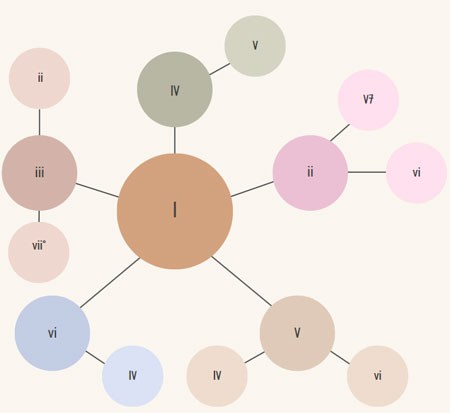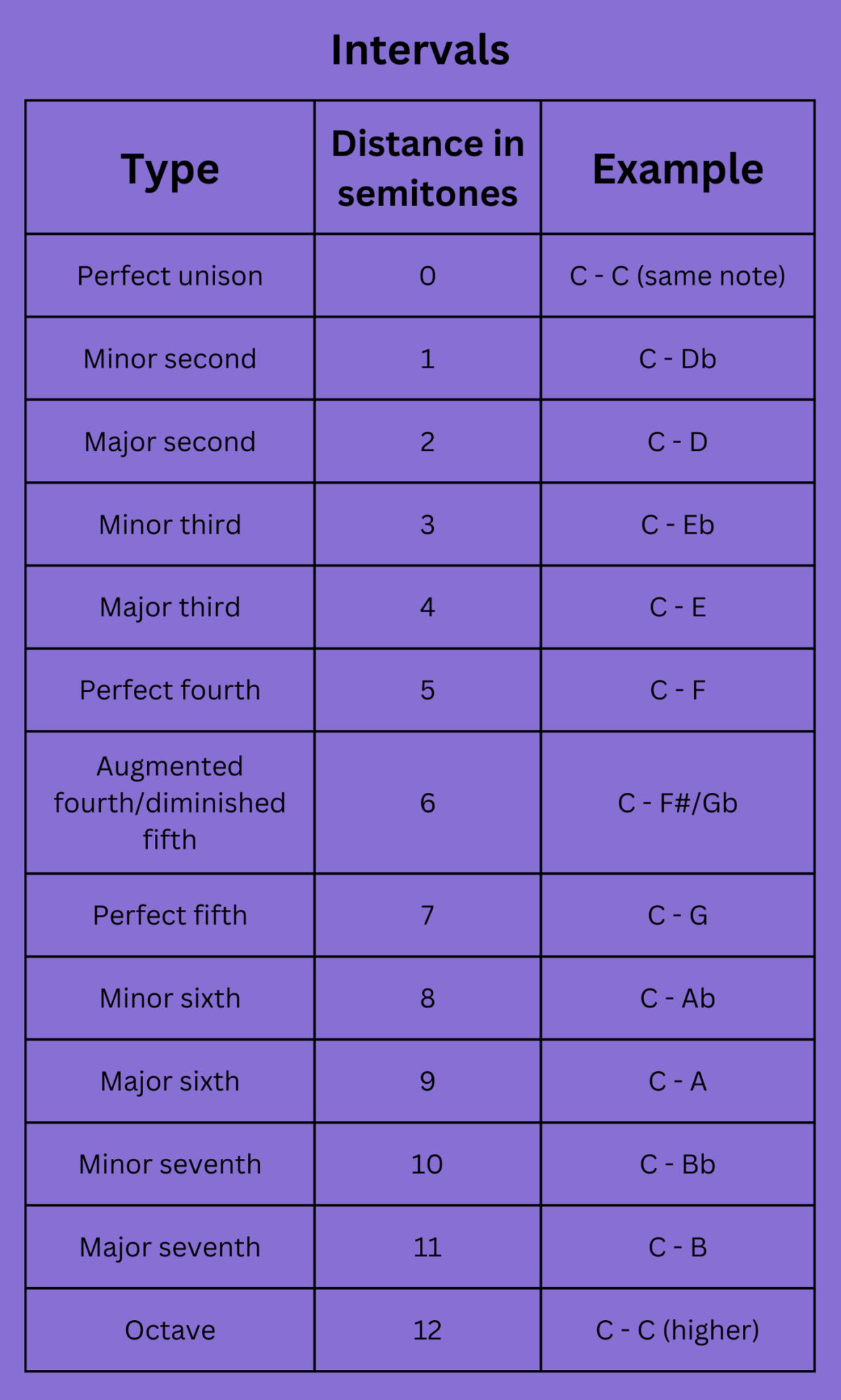Ah, the beloved 2-5-1 progression – the secret weapon of every guitarist looking to impress their friends and woo the crowd with some serious musical magic. This simple yet oh-so-powerful chord progression is the key to unlocking a world of musical possibilities, and mastering it is like having a musical superpower at your fingertips. So grab your guitar, buckle up, and get ready to become the ultimate maestro of the 2-5-1 progression. Let’s dive in and uncover the secrets of this essential tool that will take your playing to the next level – and have you shredding like a rock god in no time.
Contents
- 1 Understanding the Foundation of 2-5-1 Progression in Music Theory
- 2 Exploring the Role of the 2-5-1 Progression in Jazz and Beyond
- 3 Fingering Techniques for Smooth Transitions in 2-5-1 Chord Changes
- 4 Voice Leading Principles for Enhanced Musicality in 2-5-1 Progressions
- 5 Applying the 2-5-1 Progression Across Different Keys and Fretboard Positions
- 6 Creative Approaches to Improvisation Using the 2-5-1 Progression
- 7 Mastering Advanced Concepts: Modulation and Reharmonization within the 2-5-1 Framework
- 8 FAQs
- 9 In Conclusion: Jazz Up Your Playing with the 2-5-1 Progression!
Understanding the Foundation of 2-5-1 Progression in Music Theory
So you want to unravel the mysteries of the 2-5-1 progression in music theory, huh? Well, buckle up and get ready for a wild ride through the musical cosmos!
First things first, let’s break down what this whole 2-5-1 thing even means. Essentially, it’s a chord progression that consists of playing the chords based on the 2nd, 5th, and 1st tones of a given key. Sounds complicated? Fear not, dear reader, for we are about to decode this musical enigma together!
Think of the 2-5-1 progression as the holy trinity of chords in music theory. It’s like the three musketeers of chords, always ready to swoop in and save the day with their harmonious charm and irresistible allure.
When you hear a 2-5-1 progression in a song, it’s like unlocking a secret musical code that instantly elevates the listening experience. It’s the musical equivalent of finding a hidden treasure chest filled with golden harmonies and sparkling melodies. So, embrace the power of the 2-5-1 progression and let it guide you on a magical musical journey like no other!

Exploring the Role of the 2-5-1 Progression in Jazz and Beyond
The 2-5-1 progression is like the secret sauce of jazz music. It’s the seasoning that adds flavor and spice to any musical dish. In the world of jazz, this particular chord progression is as essential as a musician‘s fedora hat.
When you hear a 2-5-1 progression, you know you’re in for a musical journey that will take you from the lush green hills of harmony to the rolling hills of improvisation. It’s like riding a musical roller coaster, with each chord change bringing a new twist and turn that keeps you on the edge of your seat.
But the beauty of the 2-5-1 progression is that it’s not just limited to jazz. Oh no, this bad boy can be found popping up in all sorts of genres, from pop to R&B to even the occasional country tune. It’s like that friend who can seamlessly fit into any social circle, effortlessly charming everyone they meet.
So next time you find yourself grooving to a catchy tune or getting lost in the smooth sounds of a jazz standard, take a moment to appreciate the unsung hero that is the 2-5-1 progression. It may just be a few chords, but those chords have the power to make your heart sing and your feet tap. And that’s the magic of music, my friends!

Fingering Techniques for Smooth Transitions in 2-5-1 Chord Changes
When it comes to smooth transitions in 2-5-1 chord changes, fingering techniques play a crucial role. Here are some tips and tricks to nail your chord progressions like a pro:
- Position Your Fingers Correctly: Make sure your fingers are placed in the right positions to smoothly transition between chords. Keep those digits nimble and ready to glide effortlessly from one chord shape to the next.
- Practice Your Fingerpicking: Fingerpicking is an essential skill for 2-5-1 chord changes. Get those fingers picking and plucking with precision to create seamless transitions between chords.
- Use Barre Chords Wisely: Barre chords can be your best friend or your worst enemy in 2-5-1 progressions. Make sure to grip those barre chords firmly and adjust your finger position as needed to ensure smooth transitions.
Remember, practice makes perfect when it comes to mastering . So, grab your guitar, warm up those fingers, and start jamming out those sweet chord progressions like a boss!

Voice Leading Principles for Enhanced Musicality in 2-5-1 Progressions
When it comes to navigating through 2-5-1 progressions in jazz music, mastering voice leading principles is key to achieving enhanced musicality. Think of it as the GPS for your chords – you want to smoothly guide your listeners from one chord to the next, without any sudden detours or wrong turns.
One important principle to keep in mind is avoiding parallel motion between voices. You don’t want all your notes moving in the same direction at the same time – that’s like having a choir where everyone sings in unison. Spice things up by using contrary motion or oblique motion to create more interest and color in your progressions.
Next, pay attention to the spacing between your chords. You don’t want to bunch up all your notes too closely together, or you’ll end up with a musical traffic jam. Spread those voices out and give each note room to breathe. This will not only improve the clarity of your harmonies but also create a more dynamic and engaging sound.
Lastly, don’t be afraid to experiment with chord inversions to add variety to your progressions. Instead of always starting with the root position, try flipping your chords upside down to create different textures and voicings. This can add a whole new dimension to your 2-5-1’s and take your musicality to new heights. Remember, in jazz, the sky’s the limit – so go ahead and let your creativity soar!
Applying the 2-5-1 Progression Across Different Keys and Fretboard Positions
So you’ve mastered the 2-5-1 progression in one key and in one position on the fretboard. Congratulations! Now it’s time to step up your game and apply this magical musical formula across different keys and positions.
Just like a spy maneuvering through different disguises, you’ll need to shift your fretboard positions to adapt to the new keys. Get ready to unleash your inner secret agent as you navigate through the mysterious world of music theory.
Remember, each key you explore will unlock a new realm of possibilities for your guitar playing. It’s like discovering hidden treasure in the vast ocean of musical notes. So grab your trusty guitar and set sail on this epic musical adventure.
As you journey through different keys and fretboard positions, don’t be afraid to experiment and get creative. Mix things up, try new variations, and see where the music takes you. Embrace the challenge and unlock the full potential of the 2-5-1 progression across the vast expanse of the fretboard.
Creative Approaches to Improvisation Using the 2-5-1 Progression
If you’re tired of playing the same old 2-5-1 progression in the same old way, fear not! There are plenty of creative approaches you can take to spice things up and keep your audience on their toes. Here are some fun ideas to try out:
- Play it backwards: Instead of going from the ii to the V to the I, try flipping it around and starting with the I chord, moving to the V, and then resolving on the ii. It’ll give your progression a whole new feel!
- Add some chromatic notes: Experiment with adding in some extra notes in between the standard chord tones to create tension and interest. Maybe throw in a sharp 11 or a flat 13 to keep things spicy.
- Change up the rhythm: Don’t feel tied down to a standard 4/4 groove. Try playing the progression in a different time signature, or experiment with syncopated rhythms to give it a fresh feel.
- Embrace dissonance: Don’t be afraid to play around with dissonant intervals like the tritone or minor 9th. Embracing a bit of tension can lead to some truly innovative and unexpected sounds.
Mastering Advanced Concepts: Modulation and Reharmonization within the 2-5-1 Framework
If you’re tired of playing the same old chord progressions, it’s time to step up your game and master some advanced concepts within the 2-5-1 framework. Modulation and reharmonization are key techniques that can take your playing to the next level. Let’s dive in and explore how to spice up your chords!
Modulation is like taking your chords on a wild adventure. It’s all about changing keys smoothly to add drama and interest to your playing. Imagine your chords taking a road trip through different musical landscapes, each one bringing new colors and emotions. With modulation, you can create tension and release, surprise your listeners, and keep them on the edge of their seats.
Reharmonization is the art of jazzing up your chords by reimagining the harmonic structure of a song. It’s like giving your chords a makeover – suddenly, they sound cooler, fresher, and more sophisticated. With reharmonization, you can play around with chord voicings, substitutions, and extensions to create a rich and vibrant soundscape that will dazzle your audience.
So, grab your instrument, buckle up, and get ready to embark on a musical journey that will take your playing to new heights. With modulation and reharmonization at your fingertips, the possibilities are endless. Let’s push the boundaries of the 2-5-1 framework and unleash your creativity!
FAQs
Can you explain what a 2-5-1 progression is?
Sure thing, my fellow guitar aficionado! The 2-5-1 progression is essentially a common chord progression found in jazz and other genres. It consists of the ii, V, and I chords in a given key, creating a harmonically rich and satisfying sequence.
Why is mastering the 2-5-1 progression important for guitarists?
Well, my fretboard-wielding friend, the 2-5-1 progression is like the secret sauce of jazz and many other musical styles. By mastering this progression, you’ll be able to navigate complex chord changes with ease, improvise more effectively, and elevate your playing to new heights.
What are some practical tips for mastering the 2-5-1 progression on guitar?
Ah, I’m glad you asked, my fellow six-string slinger! One tip is to start slow and focus on each chord individually before putting them together. Another tip is to experiment with different voicings and inversions to add color and variety to your playing. And of course, practice, practice, practice!
How can guitarists use the 2-5-1 progression in their own compositions or improvisations?
Great question, my musical compatriot! The beauty of the 2-5-1 progression is its versatility. You can use it as a building block for composing melodies, creating lush harmonies, or as a framework for your improvisations. The possibilities are endless!
Any recommended songs or artists to study for mastering the 2-5-1 progression on guitar?
Absolutely, my fellow disciple of the fretboard! Some classic jazz standards like “Autumn Leaves,” “Blue Bossa,” and ”All the Things You Are” are great examples of the 2-5-1 progression in action. Study these tunes, listen closely to how the chords move, and soon you’ll be a 2-5-1 master yourself!
In Conclusion: Jazz Up Your Playing with the 2-5-1 Progression!
So there you have it, fellow guitarists! The 2-5-1 progression is the key to unlocking the secrets of jazz, blues, and beyond. Whether you’re a seasoned pro or just starting out, mastering this essential tool will take your playing to the next level. So grab your guitar, practice those chords, and get ready to dazzle your audience with some smooth and soulful sounds. Happy jamming!



